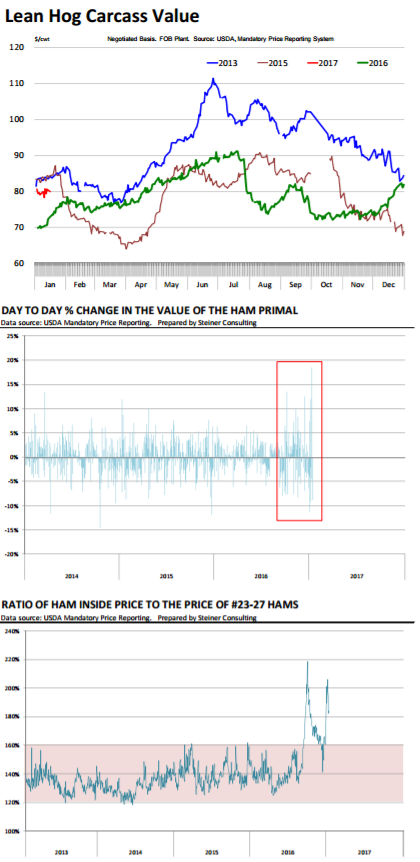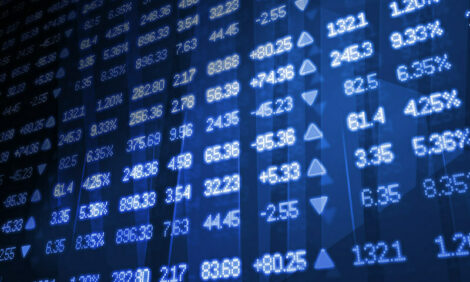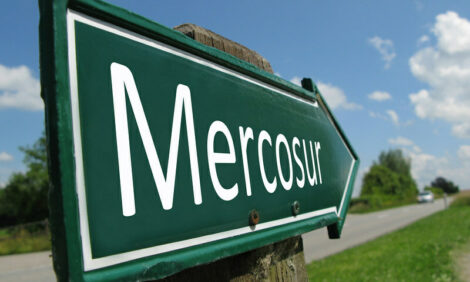



Noise in the Pork Market Adding to Volatility
US - For those that watch futures or meat product markets on a daily basis a certain amount of noise is par of the course. But we have noticed that the amount of noise in the pork market has increased significantly in the last three months and this, at least in our view, has added to the overall volatility, writes the Steiner Consulting Group.To be sure, the reality of snug packing capacity and record hog numbers has played a role in this. But so have changes to the way in which USDA calculates the value of the individual pork primals and, ultimately, the value of the overall carcass.
As USDA notes in their methodology overview, the pork carcass cutout is “an estimate of the value of a 53‐54 per cent lean, 205 lb. hog carcass based upon current wholesale prices being paid for sub‐primal pork cuts.” Since October USDA has made two changes in how the cutout is calculated. The first change came in October whereby USDA started to include boneless hams in its calculation of the ham primal.
The reasoning for this change was solid as there was significant trade taking place in the market for boneless hams (insides, outsides, knuckles) and this was not being reflected in the overall total.
The second change came at the start of the year where USDA updated the various factors it uses to calculate the cutout value.
Are we seeing more volatility in the value of the ham primal? We think the answer to that is “Yes”.
The second chart below shows the percentage change in the day to day value of the ham primal. Since the end of October, the standard deviation in the day to day variation of the ham primal has been 6 per cent, about double what it was for the period Jan 2013 ‐ October 2016.
And this includes the summer and fall of 2014 when PEDv had an extremely disruptive impact in the hog and pork markets.
In the two week period since the start of this year we have seen the value of the ham primal drop 11 per cent one day, jump 7 per cent the following day, then drop 9 per cent increase 12 per cent and so forth.
We think the reason for the wild moves has to do with the relative volume of various ham products traded in a given day. If one day there is a very light trade of heavy hams and more volume on the boneless product then the primal value naturally jumps higher and vice versa. What has further contributed to the volatility not that boneless hams are part of the equation is that boneless ham values have exploded.
The last chart shows the ratio of ham insides relative to the price of #23‐27 hams. While that ratio tended to move around depending on the time of year, insides generally received a 1.2 to 1.6 multiple relative to the bone‐in product. Last fall the multiple hit 2.2 and even today it is still significantly higher than in previous years. There is a lot of speculation as to why the value of boneless products has exploded but labor constraints and the fact that hog supplies have been so heavy are mentioned as key reasons for the spike.
For now market participants need to take the heightened volatility in the value of the cutout into consideration. Market participants have been watching the cutout value closely to gauge packer interest in bidding on hogs.
But in any given day just looking at the topline cutout number can be misleading. Rather we urge you to look at moves in the individual primals as well as the volume of product traded in a given day.









